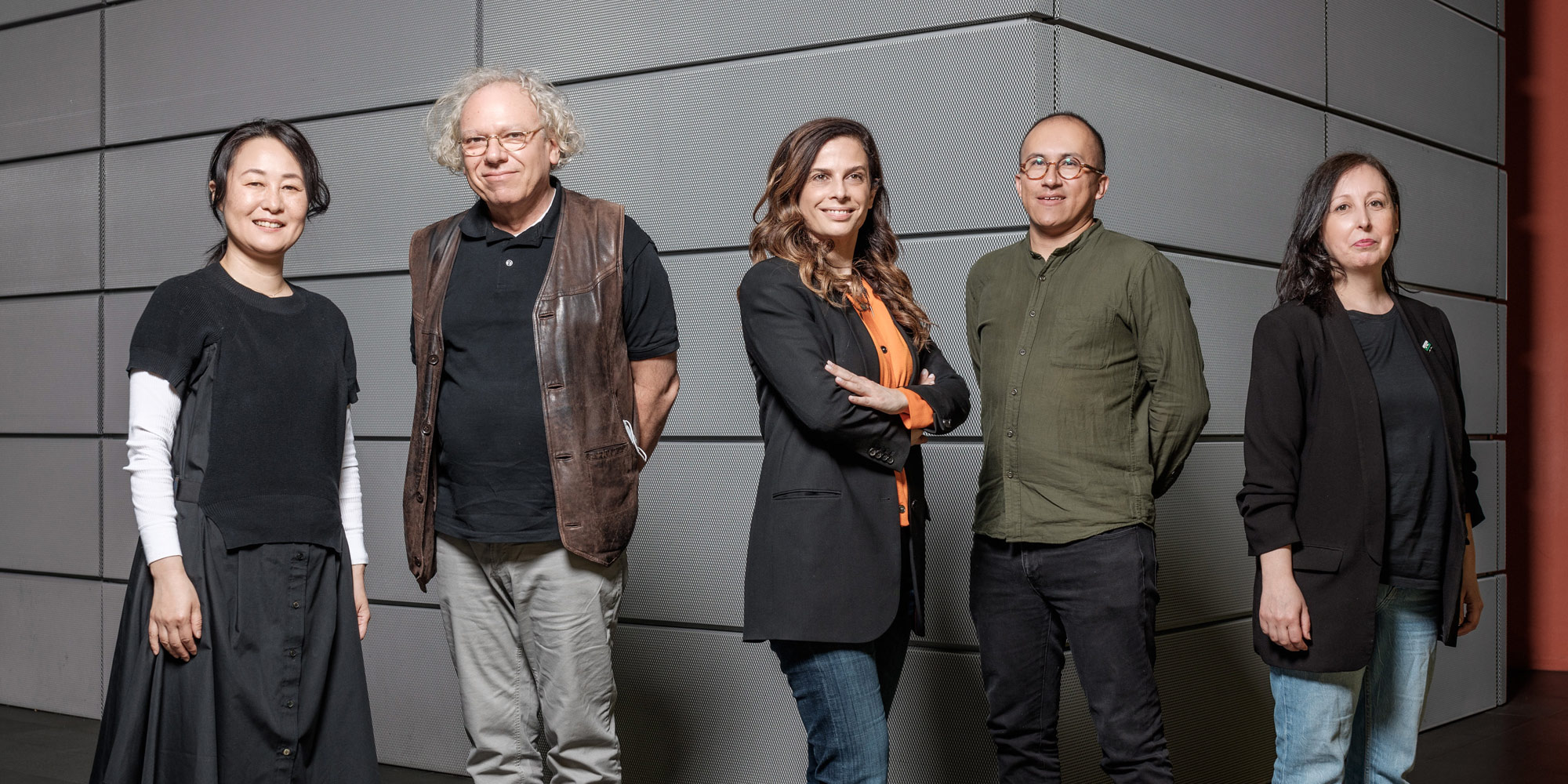2022 S+T+ARTS Prize Jury
All submissions are judged by a jury to decide on the two prize-winning projects and up to ten honorary mentions.
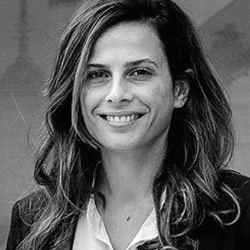
Francesca Bria (IT) is the President of the Italian National Innovation Fund, and Honorary Professor in the Institute for Innovation and Public Purpose at UCL in London. She is a Senior Adviser to the United Nation (UN-Habitat) on digital cities and digital rights. Francesca Bria is leading the DECODE project on data sovereignty in Europe, and is a member of the European Commission high level expert group Economic and Societal Impact of Research and Innovation (ESIR). Francesca has a PhD in Innovation and Entrepreneurship from Imperial College, London and MSc on Digital Economy from University of London, Birbeck. She has been teaching in several universities in the UK and Italy and she has advised Governments, public and private organizations on technology and innovation policy, and its socio-economic and environmental impact.

Andres Colmenares (CO/ES) is the co-founder of IAM, the creative research lab that helps responsible citizens and organisations make better decisions by using futures as tools to anticipate challenges and opportunities, while exploring the socio-ecological impacts of digital technologies and infrastructures. In his role as a strategist, curatorial designer and creative foresight consultant he has led and developed partnerships with organisations as NESTA, Tate, Red Bull, University of Arts London and BBC. He is also co-director of The Billion Seconds Institute, a lifelong learning initiative to reimagine the digital economy and organiser of IAM Weekend, the annual community-driven gathering in Barcelona for creative professionals looking to collectively rethink the futures of the internet(s). He is faculty of the Masters in Design for Emerging Futures as the Institute for Advanced Architecture of Catalonia and has been invited as guest lecturer at institutions such as Merz Akademie, Berghs School of Communication and ELISAVA School of Design & Engineering of Barcelona, where he is now leading a new master’s program on the impact of Arts, Design & AI in society. He also has contributed opinion articles and writes short fiction for publications such as CRACK Magazine, Branch Magazine, The Site Magazine and LS:N Global.

Lucía García (ES): Law graduate from the Universidad Complutense de Madrid with postgraduate studies in European Affairs and Cultural Institutions Management, Lucía García started her career training as a broker and as a risk analyst in Paris and London. After these, she returned to Madrid to work as Coordinator of the International Fashion Week, later taking up the position, for six and a half years as Commercial Director of ARCO, the International Contemporary Art Fair of Madrid, Spain. In August 2006, a year prior to its official opening, she arrived at LABoral Centro de Arte y Creación Industrial to work closely with the founding director in launching the project as its General Coordinator and Head of Public Programs. In September 2011 she was appointed Managing Director and Secretary General of LABoral, a position that she has held for 15 years, until June 2021. In August 2021, after a public merit-based competition, she was elected and appointed General Director of iMAL (Interactive Media Art Laboratory), Brussels.
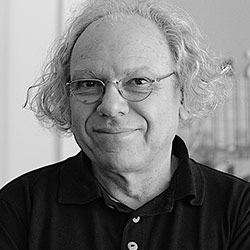
Alexander Mankowsky (DE), born 1957 in Berlin, studied Social Science, Philosophy and Psychology at the ‘Freie Universität Berlin’. In 1989 he started working in the research institute of Mercedes-Benz AG in Berlin. The multidisciplinary approach in the institute integrated a wide array of disciplines, from social sciences to artificial intelligence. His current working topics are Futures Studies, focused on the ever-changing culture of mobility, the interdependency of social and technological innovation and other aspects of envisioning paths into the future.
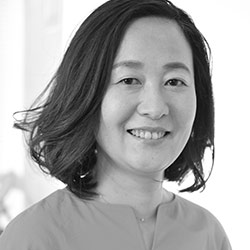
Asako Tomura (JP) is the General Manager of the Corporate Technology Strategy Division at the Sony Group Corporation. She also serves as Visiting Researcher at the University of Tokyo and an Adviser for the Project to Support Emerging Media Arts Creators, Agency for Cultural Affairs, Government of Japan, 2017–2019. TOMURA has 25 years’ experience as a content-plus-sustainability professional, with a particular focus on the integration of advanced technology into new experiences, entertainment and social issues. After completing her master’s degree in Chemistry and Media Arts at Keio University, she started her career at Shiseido in advertising. She then joined Sony Corporation in 2001, and while employed at Sony Pictures Entertainment (Japan) and at Aniplex, Inc., oversaw the launch of the digital content distribution business for film and animation. Afterward, as Head of CSR Innovation in Sony HQ, she engaged with NGOs, the United Nations and other organizations on projects that utilized technology to tackle social issues from 2010 to 2014. She also acted as community manager of creators for Sony’s new concept Life Space UX in 2015. Currently, she oversees content development, Sci&Tech communication and sustainability. As a visiting researcher at the KAKEHI Yasuaki Laboratory, the University of Tokyo Interfaculty Initiative in Information Studies, she is researching the collective creations of artists and engineers. Award: Sound installation Acoustic Vessel Odyssey, the 22nd Japan Media Arts Festival Entertainment Division Jury Selections, 2018
2022 S+T+ARTS Prize Advisors
The advisors are renowned international consultants with expertise in this field. They recommend projects and encourage a wide range of potential participants to submit proposals. In addition, they ensure a balance in terms of gender and geographical origin of the participants.

Ghislaine Boddington (UK) is an award-winning artist, curator, director and presenter, specialising in the future human, body responsive technologies and immersive experiences. She is co-founder and Creative Director of body>data>space, a pioneering interactive creative design collective who have advocated for the living body to be at the heart of the digital debate since the early 1990s. With a background in dance and performing arts and a long-term focus on the blending of our virtual and physical bodies, she engages in highly topical and future digital issues for our living bodies, including personal data usage, identity and representation of the self, connected body enhancements, digital itimcacy and collective embodiment of the future.
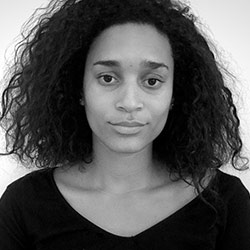
Amanda Masha Caminals (ES) is co-director and curator of the Mutant Institute of Environmental Narratives (IMNA), the laboratory of Matadero Madrid that fosters artistic practices in connection with journalism, science and technology as a response to the challenges of the climate crisis. Previous to that, she directed the CITY STATION of the Environmental Health Clinic by artist Natalie Jeremijenko at the Centre for Contemporary Culture of Barcelona (CCCB). She is founder of the organization Translocalia, a network of artists, curators and designers to plan for the future through art. She holds a BA in Humanities, a Degree in History of Art and an MA Hons in Curating Contemporary Art from the Royal College of Art in London.
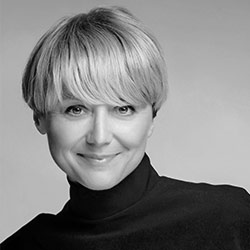
Michela Magas (GB/HR) is a designer who bridges science and art, design and technology, and academic research and industry. She is Chair of the Industry Commons Foundation, innovation advisor to the European Commission and the G7 leaders, Member of President von der Leyen’s High Level Round Table for the New European Bauhaus, and member of the Advisory Board of CERN IdeaSquare (ISAB-G). Michela is the Founder of Stockholm-based MTF Labs and has over the past 10 years been feeding policy directly from grassroots experimentation with its global community of 8000 contributors from the arts and sciences. In 2017 she was awarded European Woman Innovator of the Year and in 2016 she was presented with an Innovation Luminary Award for Creative Innovation by the European Commission and Intel Labs Europe.
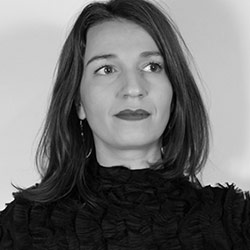
Areti Markopoulou (GR) is an architect, researcher and urban technologist working at the intersection between architecture and digital technologies. She is the Academic Director at IAAC in Barcelona, where she also leads the Advanced Architecture Group, a multidisciplinary research group exploring how design and science can positively impact and transform the present and future of our built spaces, the way we live and interact. Her research and practice focus on redefining the architecture of cities through an ecological and technological spectrum combining design with biotechnologies, new materials, digital fabrication and big data. Areti is co-founder of the art/tech gallery StudioP52 and co-editor of Urban Next, a global network focused on rethinking architecture through the contemporary urban milieu. She is the project coordinator of a number of European Research funded Projects on topics including urban regeneration, circular design and construction and multidisciplinary educational models in the digital age. Areti is the founder and is currently chairing the Responsive Cities International Symposium in Barcelona while she has served as Head Curator of international exhibitions such as Future Arena and On Site Robotics (Building Barcelona Construmat 2017-19), Print Matter (In3dustry 2016), HyperCity (Shenzhen Bi-city Biennale, 2015) and MyVeryOwnCity (World Bank, BR Barcelona, 2011). Her work has been featured in exhibitions worldwide and together with Lydia Kallipoliti she has been appointed the Head Curator for the Tallinn Architecture Biennale 2022.
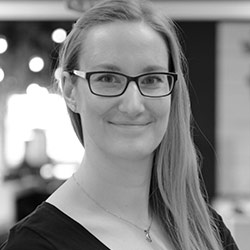
Lisa Przioda (DE) studied Communication Science (B.A.) at the Ludwig-Maximilians University in Munich/Germany and Communication Management at the University of Hohenheim (M.Sc.) in Stuttgart/Germany. Since 2015 she is part of the Innovation Management Global team at the corporate sector Research and Advance Engineering of Robert Bosch GmbH in Renningen near Stuttgart/Germany. Within the department she is responsible for the research campus’ innovative and creative space “Platform 12” as well as the company’s very own corporate coworking space “X-Change Lab”. From 2015-2020 she was responsible in organizing the “Wimmel Research Fellowship” for the company, a stipend offered to artists with the aim to foster the dialogue between research, art and business for all parties involved.
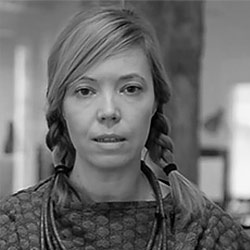
Nana Radenković (RS) is one of the co-founders of Nova Iskra, where she is focused on creating mentoring programs, trainings and workshops for individuals, organizations and companies interested in taking an active role in the processes of transformation – not only of their projects and businesses, but also through creation of new ways in which we could learn, live and work in the future. She holds MA in Management in Culture, Interculturalism and Mediation in the Balkans from the University of the Arts Belgrade, and has extensive experience in working in the private, public and civil sectors. She was a professor at the Faculty of Media and Communications in Belgrade, and a mentor within the Nelt Educational Program and Creative Mentorship.
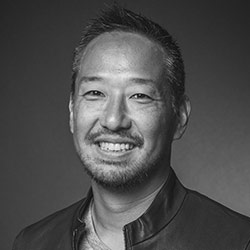
Kei Shimada (JP) is a Japanese American entrepreneur, award winning innovation leader and currently Managing Director of R/GA Tokyo since April 2021 where he helps his clients prototype the future. He focuses on world first, region first and industry first projects, having led teams to develop Japan’s de facto national database of evacuation shelters, produced the world’s first AI classic concert at Ars Electronica that won a Silver Lion at the Cannes Festival and created the world’s first smart speaker that won a CES Innovation Award. Previously, he was leader of the Digital Makers Lab at IBM Japan, and before that the Global Innovation Director at Dentsu. Kei is one of Japan’s most active global keynote speakers having spoken in approximately 40 countries, and also contributes as pitch mentor for the Japan chapter of the world’s largest accelerator PlugandPlay. He is also one of three official evangelists assisting the Prime Minister’s Office in their promotion and business development around the national QZSS satellite. He is a graduate of Waseda University and with an Executive MBA degree from Quantic School of Business and Technology.

Kei Takeuchi (JP) is the deputy general manager of the brand and innovation design division at the Japanese advertising agency HAKUHODO. He works with clients on brand building and innovation, through “the integration of logic and sensibility” and “co-creation process”. He is also leading the HAKUHODO side of a collaborative project with ARS ELECTRONICA.
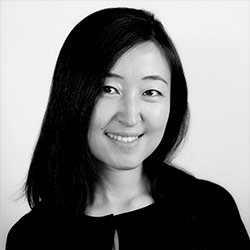
Lining Yao (CN) is an Assistant Professor of Human-Computer Interaction Institute (HCII) at Carnegie Mellon University, School of Computer Science, directing the Morphing Matter Lab (https://morphingmatter.cs.cmu.edu/). Morphing Matter Lab develops materials, tools, and applications of adaptive, dynamic and intelligent morphing matter from nano to macro scales. Research often combines material science, computational fabrication, creative art and design practices. Lining and her lab work anti-disciplinarily, publishing and exhibiting across science, engineering, design and art. Lining gained her Ph.D. at MIT Media Lab in 2017.
Technology Without Meaning is Meaningless
Statement of the S+T+ARTS Prize ’22 Jury (Francesca Bria, Andrés Colmenares, Lucía García, Alexander Mankowsky, Asako Tomura)
For this year’s S+T+ARTS Prize, 1,499 submissions came from 96 countries, 860 of these were directly submitted to the S+T+ARTS Prize portal; in view of the rather difficult-to-describe relationship between “science, technology and the arts” as a stimulus for the industry, this alone is a tremendous success. The extent of the collaboration between the European Union and Ars Electronica is astounding.
What is STARTS? What purpose does it serve? This is easiest to explain through a comparison with start-ups. Start-ups process technologies in a utilitarian manner: by creating business cases. In STARTS, on the other hand, technologies are utilized as media for meaning and sense: the result is poetic statements with a technological element.
Both approaches to innovation have their validity, but at different points in the process. Innovation processes in the automotive industry, for example, work with a funnel model: all the ideas that come from somewhere are screened based on previously determined criteria; at the end of the funnel, they are translated into concrete product innovations that are actually to be developed. For this “somewhere” that spawns the ideas, so-called jam sessions with start-ups are held. Pitches are made that begin with making the world a better place (unsurpassable in this regard is the series Silicon Valley, HBO 2014), and then become lost in the weeds of technological details. If it is clear from the outset for what area solutions are to be found, this process is fairly likely to lead to success. The sense-or-nonsense question is not addressed.
It is a different matter if the search area cannot be so clearly defined. As soon as it becomes about designing desirable and viable futures, the cultural message becomes the focal point. It must be truly groundbreaking in order to be able to serve as a framework for the later introduction of specific steps in industrial research and development. And this is where the relevance of STARTS lies: in the connection of science and technology with cultural longings and fears, using the artwork as a medium.
In this year’s jury conference, we narrowed down the 1,499 entries to 110 art projects. In keeping with the philosophy of STARTS, they were divided into two large categories: in one, the focus was on the artistic personality, in the other the transferability of the art project to other content in the sense of “best practice.”
If one looks at the entries from 2016 to today, a shift to collaborative work is evident. This may be due to the fact that the civilization-driven warming of the planet is becoming an increasingly dominant topic. The inherent complexity of climate change simply demands the teamwork of artists with scientific and academic institutions, which is clearly evidenced by Antarctic Resolution, curated by Giulia Foscari.
An impressive proportion of the artistic community is active in this context: the open-source project The Exploded View Beyond Building, for example, shows how entire houses can be built from biologically based and industrially produced basic materials that are already available today. At the other end of the spectrum are the DIY projects inspired by the spirit of the prepper movement, such as UITSLOOT, by Gijs Schalkx. “Don’t outsource your ethics,” he writes. KompleX KapharnaüM’s A Sun Architecture – The Party is in Full Swing powers music concerts with solar energy. Ethical considerations motivate artist-designers to take action. They no longer want to wait for large-scale societal solutions.
The view of the biosphere, on the other hand, has an almost melancholic feeling. With Inanimate Species, Jonathan Ledgard and Alex Ritcher-Boix contrast the obliteration of all life with the creation of death. Civilization’s increasing orientation toward “necrophilia”—as Erich Fromm called the opposite of “biophilia,” the orientation toward life—is becoming oppressively apparent. In her Plant Intelligence Plan, Zhang Tianyi creates chemical-mechanical protheses for plants in order to make visible their (necrophilous) degradation to purely crop plants.
In April 2022, an additional acceleration of greenhouse-gas emissions was recorded. It is no wonder, then, that some artists seek an avenue of escape in the romanticism of scientific magic. In AdS/CFT 001, Mikromedas translates the depictions of cosmic black holes into suggestively internalized image and sound forms.
The second noticeable cluster was digital-robotic. While at the beginning of STARTS in 2016, there were largely vague promises of “artificial intelligence,” today—six years later—the view of everything digital, including artificial intelligence, has become more pragmatic. Robots are introduced as avatars for real people, who can now participate in life despite their disabilities. The technology-related lack of communication skills that robotic constructions have are compensated for by humans. In 2013, the job of bartender was still regarded as a highly automatable. In a playful manner, Oryelab, OYAMATSU, and TASUKI turn the much-hailed use of robots as bartenders into an emancipatory human-machine symbiosis with Avatar Robot Cafe DAWN ver.ß.
The reason why robots, whether physical or purely digital, become so bogged down in terms of communication when they are left to their own devices, is given by Elisa Giardina Papa in her project Cleaning Emotional Data. Click workers are compelled to classify pictures they are shown to a category of emotion, one every second. The mechanized results are correspondingly one-dimensional.
More promising, on the other hand, are digital creations in which the human element is not conserved as an ingredient but remains an animated point of departure. Herndon succeeds in this in an especially playful manner. With her digital twin, Holly+, she has created a wonderful, confidence-bolstering example for a digital tool that expands human abilities. The prerequisite for this is free access to the necessary technologies and ample time—which Herndon had due to the pandemic.
The flip side of Big Data and AI with regard to a utilization of digital technologies as a weapon against people was illustrated most drastically by Digital Violence: How the NSO Group Enables State Terror by Forensic Architecture.
The discussions in the jury were very intense. Every submission was discussed extensively, as at some point a majority decision had to be made. This was made quite difficult by the tremendous submissions.
In the spirit of STARTS as outlined at the beginning, the artists convey strong messages:
- The “cultural longing” to finally DO SOMETHING about the climate crisis is expressed in manifold ways. Industrial innovation should thus be geared toward the production of tools that are helpful to this end.
- Ethics are brought down to earth from the nebulous heights of declarations of intent. Applied ethics means offering products that are useable in the here and now.
- This applies not only to physical products but is equally a basis for digital innovations, whose downsides are now well known.
The playful approach to technology is a basic characteristic of humanity. It is crucial to understand this talent and take it into consideration in the development of products and services.
S+T+ARTS Prize ’22
Grand Prize – Innovative Collaboration
Awarded for innovative collaboration between industry or technology and the arts (and the cultural and creative sectors in general) that opens new pathways for innovation.
Antarctic Resolution, Giulia Foscari, UNLESS
Although the images from Antarctica have become somehow iconic for the looming planetary change, besides a few experts, most of us don‘t have any understanding of the very fragile ecosystem of Antarctica and its importance to the whole planet. How can we not just see the symptoms but understand the causations and consequences? This is the major challenge that the fascinating project Antarctic Resolution, initiated, curated and enabled by Giulia Foscari / UNLESS, is set to take on, and with this in mind it is no longer surprising that it is probably the largest and most diverse collaboration ever to win this award for innovative collaborations. Giulia Foscari herself is an excellent example for multi- and cross-disciplinary expertise: architect researcher, activist, founder, educator, working in and at the hotspots of globalization and collaborating with local communities as well as with many big shots in architecture and urban planning, she built not only a comprehensive knowledge and overview of the ongoing climate change but also wove an immense network of experts and gained broad reputation with her presentations in many high profile art exhibitions and events. One of the many characteristics and features often attributed to art is its ability to make the obvious also seeable, the understandable also comprehensible and this is one of the high qualities of Antarctic Resolution. It opens up new perspectives and insights by leveraging the means and powers of art as a research practice as well as a way to enable awareness and concern, participation and involvement. It is not only a remarkable evidence of the growing number of art projects that go beyond addressing the topic of climate change but engage in the activism that is necessary to tackle it. Antarctic Resolution is also an amazing collaborative achievement with over 150 experts collaboration and contributing. And last but not least it is an exciting, almost breathtaking art installation.
S+T+ARTS Prize ’22
Grand Prize – Artistic Exploration
Awarded for artistic exploration and art works where appropriation by the arts has a strong potential to influence or alter the use, deployment, or perception of technology.
Holly+, Holly Herndon, Mathew Dryhurst
One of the most important roles artists can play in 21st-century societies is to anticipate the risks, challenges, and opportunities for the many innovations that are emerging from the adoption and evolution of complex sociotechnical systems based on perplexing fields of study such as cryptography or artificial intelligence. Through extensive creative research, critical open experimentation, and innovative collaborations, Holly Herndon, Mathew Dryhurst, and the network of collaborators they weaved between Berlin, New York, and Barcelona, have been able to develop a unique hybrid project with Holly+, merging a new custom voice instrument with a creative platform and a test of a decentralized and cooperative economic model that can have deep implications in changing the power dynamics of copyright and IP in the music industry, while raising questions of the interdependencies of a digital economy, digital sovereignty, and digital identity. By asking (and performing) a difficult, poetic, and potentially metaphorical question—“What does it mean to own a voice?”—this project gives us a brilliant example of how artists, governments, and citizens can use and play with methods such as machine learning to rethink our interrelationships with digital technologies, the societal potential and perils of automation, and the augmented value of communal ownership and distributed governance systems.
S+T+ARTS Prize ’22
Honorary Mentions
A Sun Architecture – The Party is in Full Swing, Stéphane Bonnard, KompleX KapharnaüM
The ongoing energy crisis is presenting a huge challenge to governments across Europe and opening the floor for important debates on our relationship with energy and the politics of energy sources, both as a society and as individual citizens. With A Sun Architecture – The Party is in Full Swing, the interdisciplinary team of KompleX KapharnaüM presents an artistic proposition, built on an architectural kit that uses printed photovoltaic surfaces and flexible batteries to tap into a critical question in an experiential and immersive way: “If energy is limited, who will decide how to use it?” Bringing this high-level topic to a personal decision context, this project allows citizens to reduce the abstraction of this socioeconomic challenge and reflect on the tensions between individual and communal priorities. Through this solar-powered live performance supported by an eclectic mix of engineering, political, and architectural mindsets, they are not only advocating for energy autonomy but also moving one step away from technological solutionism, and also dealing in a playful way with the compounded politics of energy use, asking creatively what happens when a resource that is often perceived as endless and is taken for granted in many parts of the world is rationed.
Ambient Weaving, Hosoo Co., Ltd., Yasuaki Kakehi Lab, The Univ. of Tokyo, ZOZO NEXT, Inc.
What does it mean to be a long-established master in the field of traditional crafts? It is a bold attitude to remain on the cutting edge over time and have a willingness to undergo drastic changes. It is whether a master can also be a “meister” in value creation, incorporating the advanced technology of the times, reinventing the value it provides, and showing the future. The overwhelming beauty that is created as a result of these efforts will be a source of its timeless popularity. Nishijin brocade has a history of 1,200 years and represents the pinnacle of Japanese silk weaving. Hosoo is a long-established Nishijin textile workshop in Kyoto, founded in 1688. Hosoo has teamed up with Yasuaki Kakehi’s laboratory at the University of Tokyo and ZOZO NEXT, a startup that applies cutting-edge technology to the fashion industry. The three parties have their own strengths: Hosoo was responsible for weaving technology, the pursuit of beauty, and historical examination of cloth, while Professor Kakehi’s team was responsible for interaction design and information technology, and ZOZO NEXT was in charge of material science and business feasibility studies. The result is fabrics that change in real time as if they were breathing, interwoven with their surroundings. The fabric changes gently in response to light, temperature, humidity, carbon dioxide, and other factors in the space, enabling people to wear a natural environment. There is no technological functionality to be seen; what there is, are magnificent fabrics that emanate a solemn aura. The collaboration of all three parties was essential and led to a level of perfection that no one had ever seen before. The future of traditional crafts, which will survive the next 100 years, was beautifully demonstrated.
Avatar Robot Cafe DAWN ver.β, Ory Yoshifuji
To have one’s own role in society and to be appreciated and relied upon by others, with or without a disability: these are the reasons for one’s existence and the meaning of life that everyone desires. And everyone wishes to control their own life as much as possible until the very end. Ory Yoshifuji developed the avatar robot OriHime with the theme of “the end of loneliness” as the theme of his own life, and carefully repeated prototyping to meet the user’s motives. OriHime has brought a social body to people with disabilities and a place to operate a café that was not an algorithm-generated healing space, but a space that connected living people with each other. The café also employs 60 physically challenged people and is a social home for the avatar pilots, who are also co-developers of the avatar robot, where there is no distinction at all between healthy and physically challenged people. It is a place full of warmth where guests come to enjoy conversation with avatar and delicious food. The café is a place where people are constantly laughing, where OriHime pilots and visitors exchange more human-like banter than human beings, and where the joy of people is shared. The café was highly rated for its inclusive approach to solving social issues by creating a secure space and a community. We also have great expectations for its future aim toward a world where people can care for themselves in an era of accelerating super-aging society.
Cleaning Emotional Data, Elisa Giardina Papa
Elisa Giardina Papa worked remotely for several North American “human-in-the-loop” companies that provide “clean” data sets to train AI algorithms to detect emotions. Among the tasks she performed was the taxonomization of emotions, the annotation of facial expressions, and the recording of her own image to animate three-dimensional characters. Cleaning Emotional Data documents these microtasks while simultaneously tracing a history of emotions that questions the methods and psychological theories underpinning facial expression mapping. The tech industry rarely opens up about their philosophical foundation of “What is Human?” Their modeling of emotion and behavior stays opaque. Through three documentary film clips, Elisa gives us insight into the model from the bottom up. The AI model treats single nouns as sufficient to describe complex emotions such as joy or disgust. The process of applying nouns to emotional states is tellingly called “labeling.” The nouns are directly translated into cultures as different as Arab, Spanish, or Malaysian. As labels, these nouns are then attached to pixelated portraits in a working process called “click work,” where somebody sitting in front of a screen has to decide as fast as humanly possible to click on a label, in this way attaching it to a never-ending flow of portraits. Time for introspection is scarce, since the pay is low. With such training, algorithmic bias is systematically built into any AI application. To reduce algorithmic bias, work has to start with the creation of meaningful models which should then be trained with quality data. For STARTS, Elisa’s work serves as a beacon to direct the development of a European AI, grounded in our naturally given diversity of cultures and languages.
Digital Violence: How the NSO Group Enables State Terror, Forensic Architecture
When most people think of weapons used in human rights violations and the conflict zones where they happen, the images that often come to mind are of tanks, bombs, missiles, or guns in locations far away from home. But as the research agency and investigative art collective Forensic Architecture has shown with this platform, contemporary societies are now threatened by an invisible, complex, and borderless kind of violence deeply tied to the massive scale of real-time surveillance, enabled by spyware that can spread across billions of so-called “smart” devices: digital violence. In order to address this rapidly growing threat, it is key for everyone interested in addressing human rights violations, from journalists to lawyers, to have tools to better understand how these digitally-driven forms of violence operate and to collectively observe, analyze, and discuss the hidden connections between events, victims, their stories, geopolitical shifts, and power circles across time and territories. Through their evolving architectural analysis and digital modelling techniques, as well as their interdisciplinary collaborations with artists, whistleblowers, activists, journalists, and academic researchers, Forensic Architecture has been able to create an inspiring large-scale, open, and sophisticated artistic-legal resource on top of a robust yet accessible set of evidence, achieving what great art does best: making visible the invisible and translating complexity into clarity while challenging power structures and holding them accountable.
Inanimate Species, Joana Moll
Scientists warned as early as 2019 that one million species, out of an estimated eight million, are in danger of extinction, many of which could become extinct within decades, according to a UN report. Some researchers even consider that we are in the midst of the sixth mass extinction process in the history of the planet. These previously known mass extinctions wiped out between 60 and 95 percent of all species, and ecosystems take millions of years to recover. The project presented by the artist and researcher Joana Moll establishes a link between the exponential growth of microprocessors and the decrease in both the number and diversity of species, particularly insects, which form an essential part of our ecological infrastructure. Inanimate Species seeks to highlight the subtle but continuous replacement of the natural order by technological advance, and reflects not only on the cannibalization of ecologies but also on the problem of visually representing climate change. Inanimate Species aligns with European values and commitments, such as taking urgent action to combat climate change and its impacts, preserving and promoting the sustainable use of terrestrial ecosystems, and ensuring responsible, inclusive, and sustainable innovation and industrialization.
Mikromedas AdS/CFT 001, Valery Vermeulen
A black hole is a place in space where gravity pulls so much that even light cannot get out. The gravity is so strong because matter has been squeezed into a tiny space. This can happen when a star is dying. Because no light can get out, people can’t see black holes. They are invisible. Space telescopes with special tools can help find black holes, but what if music could also provide us with a way of sensing what black holes are all about? Valery Vermeulen highlights the inspirational role that art can play in a cross-disciplinary collaboration between art, science, and technology by deliberately positioning her work at the boundary where technological and scientific knowledge ends. Mikromedas brings in a highly inspiring speculative vision that could undoubtedly evolve the current state of the field of theoretical physics. Researchers working in quantum gravity offer an ever-increasing number of mind-bending models of reality that may never be tested by human endeavor. Thus, with this collaboration, a fictitious reality is being created in which scientific and artistic creativity are interchangeable. Mikromedas AdS/CFT 001 is a 45-minute musical piece that focuses on the fascinating world of astrophysical black holes. In 2005, the mathematician, musician and artist Valery Vermeulen began an intense research and production work together with other scientists, artists, and academic institutions focusing on the ultimate quest in the field of theoretical physics today, namely the search for a theory that unites the two worlds of quantum physics and Einstein’s general theory of relativity. All the music of Mikromedas AdS/CFT 001 is composed with data from numerical simulation models of astrophysical black holes and regions of extreme gravitational fields. Customized programs and systems were designed to translate large amounts of data into sound and graphics, resulting in new techniques that uncovered uncharted territory about gravitational waves or white dwarfs.
The Exploded View Beyond Building, Biobased Creations
The Exploded View Beyond Building is the outcome of a strong collaborative initiative of—in their own words—”producers, designers, builders, farmers, policy makers, artists, and knowledge institutes.“ It is a show case, a demonstrator and educational exhibition, but foremost it is also proof of the concept that sustainable manufacturing and construction is a real possibility, that bio-based materials are ready for application in real life projects. Even more than this, it is a great source of inspiration and encouragement for a new attribute that shows how the joint efforts of creativity, engineering and environmental consciousness can lead to a new way out of the stranglehold of resource- and energy wasting of old style construction industry.
The Plant Intelligence Plan, Tianyi Zhang
“If intelligence is defined as the ability to solve problems, plants have a lot to teach us,” says Stefano Mancuso. This work brings us closer to an awareness of the plant kingdom and how all beings need each other in order to exist and coexist. None of the organisms that exist in nature are autonomous or independent; rather, all organisms (including humans) are part of complex interconnected ecosystems. In this same line of thought, many scientists like Mancuso agree that plants are living beings that communicate with each other and with other species, since they are social beings. The Plant Intelligence Plan posits a return to the non-anthropocentrism of egalitarian ecological relations and advocates rebuilding the order of human civilization instead of the values enhanced in the old regime by simply calling for ecological protection, thereby inspiring people to reflect on the relationship between humans and ecosystems. In this project, Tianyi Zhang starts from ecological relationships as a departure point and bases her work on research on the intelligence of plants, thus restoring the lost ecological connectivity between commercial crops and animals through biotechnology and biomaterials.
UITSLOOT, Gijs Schalkx
Combining speculation, an a priori ridiculous idea, and low-tech DIY practical experimentation, UITSLOOT manages to balance concepts such as desire, effort, reward, and environmental impact, and at the same time invites us to imagine a different future and present. Gijs Schalkx, an artist, designer, and indie engineer (by his own definition), proposes with UITSLOOT an ingenious, cheap, and simple alternative for obtaining energy to power his means of transport, a 50 cc Honda Cub motorbike. His motorbike runs on methane energy generated from the sediment at the bottom of the many waterways in his town. To fill the container with methane gas, the artist has developed a gas collecting station that he activates himself—in a truly performative action—by wading into the water with waders and a long pole with which he releases the methane bubbles from the bottom of the ponds. His exemplary DIY action demonstrates that the naturally generated methane that would reach the atmosphere has a greater effect on the climate than the CO2 produced by the UITSLOOT engine. Gijs’ proposal is not only ingenious but also very successful.
